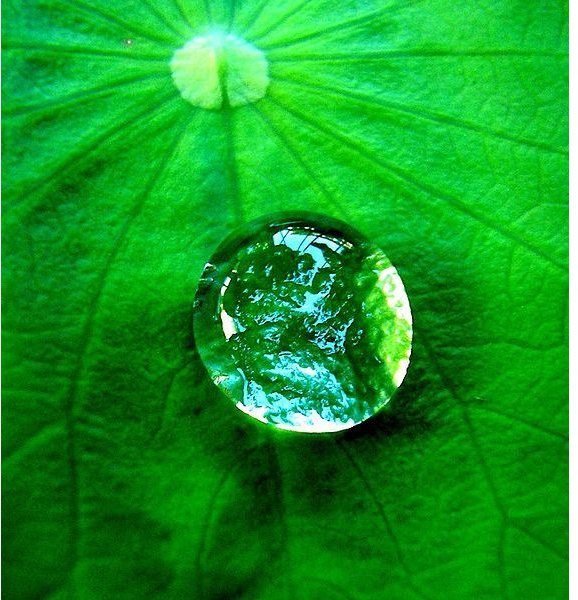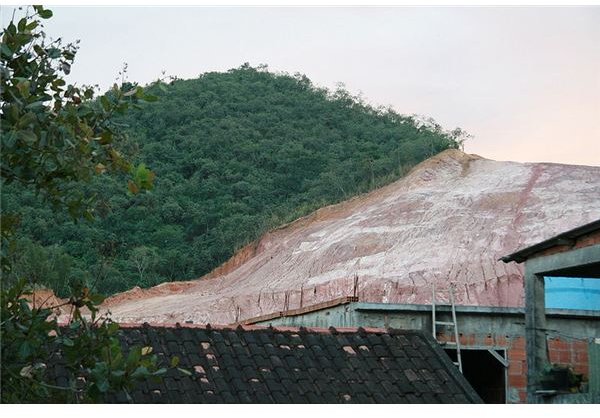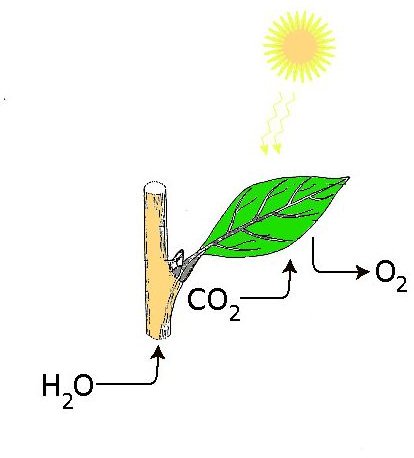The Physical & Chemical Properties of Water & Their Contributions to Plant Transpiration
Explanations on How the Properties of Water Contribute to Plant Transpiration
The properties of water help alleviate the hazards of transpiration to the plant itself. Water is being drawn out of the plant, which will be used to release water molecules into the atmosphere in exchange for carbon dioxide. Without this process, plants will not be able to complete its food production or photosynthesis.
Fortunately, water has certain physical and chemical properties to meet the demands of transpiration. A closer look at these properties will open our minds to the natural system by which water can be easily transported to the plants’ surface.
The Properties of Water Important to Plant Transpiration

Explore how the different chemical and physical properties of water make it possible for plants to produce water via transpiration.
Polarity of water - Everyone knows that the chemical equivalent of water is H2O, meaning there are two molecules of hydrogen that binds one molecule of oxygen. Molecules are arranged in such a way that there is a negative side and a positive side. In water, however, the manner by which the hydrogen bond is formed is that two hydrogen atoms are attached to only one side of the oxygen. This creates an imbalance in polarity, where the hydrogen side is minimally positive and the oxygen side is largely negative, thus keeping the water in its loose and liquid state.
Water that remains in its liquid form can be easily transported from the soil to the roots. Its polarity will also allow it to change its form into droplets once it goes through the plant’s xylem. Xylems are plant tissues responsible for transporting water and mineral nutrients from the roots throughout the different parts of the plant.
Cohesion/Adhesion Property - Still owing to their molecular arrangement, the large negative side of the oxygen promotes hydrogen bonding as it attracts the positive hydrogen sides of the other water molecules. This allows the molecules to clump together and form into droplets once they cling to the xylems instead of spreading out thinly in liquid form. Great concentrations of water molecules will maneuver their way in and out of the xylem by way of hydrogen bonding.

Capillary Property - As water droplets cling to the xylems, the capillary property of water will cause it to move from the xylems to the surface. This is the ability of the water to move through the small spaces of the xylem tissues in response to the pull of the water evaporation taking place on the leaves’ surface.
Vaporization at High Heat – As soon as water droplets find their way to the surface of the leaves, it evaporates once it reaches the high heat index of the sun and releases the hydrogen and oxygen molecules into the air. The release is a trade-off; the atmosphere will release the carbon dioxide needed by the plant only if the plant will give off the oxygen and hydrogen gases.
However, despite these chemical and physical properties of water, you should also know that certain environmental factors will inhibit the process of transpiration from taking place. Plants rely on sunlight, soil and air and it cannot be helped that there are certain factors that will influence transpiration.
Other Factors that Contribute to Plant Transpiration in Forests

Plant transpiration is stimulated by the presence of sunlight because it stirs the chlorophyll to open up the pores of the leaves as it moves on to the process of photosynthesis or food production. Rainforests and their geographic positions are good examples of how the abundance of sunlight can create an evergreen forest due to transpiration.
Sunlight - Tropical rainforests are called as such because of their position in that part of the Earth, where they almost always receive sunlight at an angle that is directly overhead. The further away a rainforest is to the equator, the more variations in the rate of plant transpiration that take place in the forest. This can affect the “canopy system”, which has the ability to provide shade on the forest floor where forest animals and microorganisms live in a healthy state of biodiversity.
Soil Quality - This is another contributing factor to the plant’s ability to transpire, since it provides the rapid replenishment of water that was lost.
Biodiversity - In forests located in areas where rainfall is seasonal, plants must have high capability for soil water seepage and capacity for storage beyond the groundwater level. This is why forest biodiversity is important, since the soil microorganisms can furnish the nutrients and protection that plants need to produce roots that can extract nourishment during the dry spells when there is no rainfall.
The Importance of Forest Biodiversity for Plant Transpiration

Thick forest vegetation has enough canopies to shield the forest ecosystem, and provide the moist air brought about by the plant transpiration going on above the forest canopies. This natural set-up prevents the plant vegetations on the forest floor from drying up. The system likewise continues to provide sustenance for the natural forest dwellers to survive a rainless season.
However, forests that receive heavy rainfall can also affect forest biodiversity. Air is constantly humid, as it contains a lot of water vapor. In such condition and with less sunlight, transpiration will not be promoted. After experiencing a season of heavy rainfall, some tree species tend to shed off their leaves at the beginning of the dry season and will take some time before the canopy system will be replenished with new foliage. Nevertheless, the living organisms in these kinds of forests have their way of adapting to a natural system by burrowing in grounds or tree trunks. The rainforest leaves, however, do not have the quality of being “evergreen”.
The Effects of Global Warming in Forest Diversity
It is unfortunate that the current state of global warming has contributed extensively in climate changes. Human activities have resulted to some major deforestations that brought about soil degradation. The Atlantic Forest in Brazil, is one example where rainforest used to cover more than a million square meters of rainforest; to date it has been reduced to only 5% of what it used to be. Denuded forests are no longer protected from the intense heat of the sunlight and against rising temperatures.
These environmental factors affect plant transpiration despite the contributions of the physical and chemical properties of water. In understanding all of these processes, we are now more aware why a whole plant vegetation can be destroyed or why a whole forest can die or why certain animal species are endangered or on the verge of extinction.
References:
https://www.ekcsk12.org/faculty/jbuckley/aplabreview/WholePlantTranspiration.pdf
https://ga.water.usgs.gov/edu/waterproperties.html
https://users.rcn.com/jkimball.ma.ultranet/BiologyPages/H/HydrogenBonds.html
https://rainforests.mongabay.com/amazon/rainforest_ecology.html
https://www.tree4life.com/ingles/deforest3.htm
This post is part of the series: Intracellular Plant Transpiration
Find a thorough understanding of intracellular plant transpiration and how plant transpiration works.
